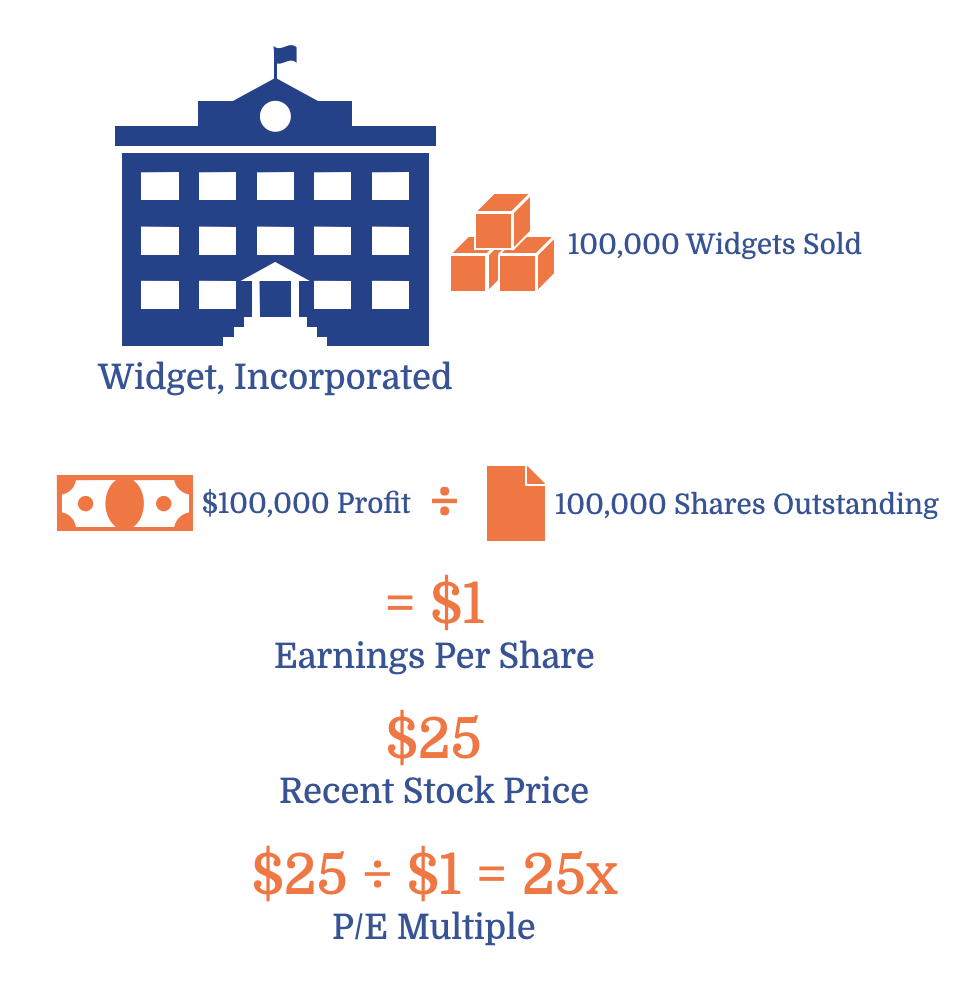Two Psychological Pitfalls that Keep Investors from Maximizing ROI
What is a reasonable ROI an investor might expect for investments in publicly-traded financial markets? The news about investing in stocks fluctuates, so it can be challenging for an investor to answer this question.
According to a 2020 treatise on investing by Roger Ibbotson and James Harrington, presented by the CFA Institute, average annual return on US stocks between 1926 – 2019 was just over 10% (see page 170 of the study).
So, the next question is, based on favorable-looking past returns, does investing in stocks make sense for one’s entire portfolio?
Investing in Stocks:
Know Yourself
The answer of course depends upon who you are as an investor. Although the average return over 93 years was 10%, there’s significant variation from year-to-year. You’ll want to consider:
- What are your goals?
- What returns do you need to meet your goals?
- What resources do you have to meet your goals?
- What is your age?
- Do you have others who are dependent upon your income, or your investments (i.e., a spouse, children, grandchildren, special charities, etc.)?
- What is your propensity for taking risk? How would you react to a 30%, 40%, 50%– or more– decline in the value of your investment accounts?
Investing in Stocks:
How Herd Mentality & Recency Bias Affect Us All
One may be tempted to invest in 100% stocks right now, for instance. So far this year, some popular market indices have been on a bit of a tear (see our previous article, “Market News: May 2023″).
While none of us want to admit it out loud, herd mentality is a real phenomenon. We can be drawn into the excitement of a winning sports team or drawn into making investments based solely on what everyone around us seems to be doing. We certainly don’t want to miss out on the excitement, or the alleged gains for that matter.
Another common phenomenon, called recency bias, causes us to place more importance on recent events than on past events. We may even forget about past events and what happened under similar circumstances in our history.
Herd mentality and recency bias can affect the timing of investing in stocks. These phenomena may encourage investors to feel comfortable to invest precisely when markets are at or near market tops. Market tops are rarely, if ever, the optimal time to buy. In fact, in a rather graphic statement, Sir John Templeton once said the time to buy is when there is “blood running in the streets.” That would certainly be near a cycle low, precisely when it feels like you should be selling it all and hiding your money “under a mattress.”
Investing in Stocks:
The Hidden Truth about Successful Investing
Tying the timing of an investment back to our initial question, expected return is a function of when you invest as much as it is what you invest in. The hidden truth about successful investing is that expected returns decline as market prices go up. Conversely, expected returns increase as market prices decrease.
Why? Investment returns are derived by a combination of dividend income and price appreciation. Price appreciation is a function of the purchase price and the market price at some point in the future.
Stock prices are determined by earnings and the multiple investors are willing to pay for an expected future stream of earnings (profits). The basic equation is known as the P/E multiple or price/earnings multiple.
Investing in Stocks:
The P/E Multiple Explained
To understand the P/E multiple when investing in stocks, let’s look at a fictitious widget maker, Widget Incorporated.
This year, Widget Incorporated produced 100,000 widgets and, after paying all their salaries, overhead and expenses, the company made $100,000 of profit. They happen to have exactly 100,000 shares outstanding, so their earnings per share is $1.00 ($100,000 profit divided by 100,000 shares outstanding). Their recent stock price was $25 per share. Using our P/E formula, we can calculate that investors are willing to pay 25 times earnings (the multiple is expressed as 25x) to purchase shares of Widget Incorporated. That makes sense, because after doing some research, we know that over the past 10 years, Widget’s multiple is usually right around 25x, and their earnings typically grow about 20% annually.

From this point, there are only two ways Widget’s stock price can increase.
- The first way is the multiple can increase. For example, if next year, Widget still earns $1.00 per share, but investors are willing to pay a multiple of 30x, then the market price will increase to $30 per share.
- The second way is that Widget can earn more on their product. Let’s say earnings increase to $1.20 per share and investors are still only willing to pay 25x earnings, the stock price will increase to $30 per share (1.20 x 25).
In the future, if they produce and sell 200,000 widgets, they might earn $2.00 per share, and at 25x the market price would double to $50 per share.
But, what if the market price of Widget stock was $50 on $1.00 of earnings, would that price be a good entry point to make an investment in Widget stock? After all, the stock did really well; it doubled.
Maybe, if you expect Widget’s future earnings growth to be more than 20% annually. Probably not, however, if you are a value investor, or you think earnings growth will remain about the same or maybe go lower. Investors may want to wait until the multiple declines back toward 25x or even lower.
We also need to consider the law of large numbers in an investment context. Let’s presume that Widget Incorporated dominates the widget market, and they now produce and sell 10 million widgets per year. If they produce an additional 100,000 next year, it only represents an added 1% of sales. Investors are expecting them to grow 20% annually. Twenty percent growth would require an additional two million widgets next year. Who will buy the additional two million units? They already dominate the market. Sure, they could raise prices, but 20% higher seems unfeasible. This illustrates the challenge of continually growing a very large company at the same rate for years into the future.
Investing in Stocks:
Should Your Portfolio Contain Only US Stocks?
Finally, let’s talk about the second question in our introduction: Does it make sense to just invest 100% of your retirement nest egg in stocks? If long-term growth is the biggest factor in favor of an all-stock portfolio, risk is the biggest factor against it. Consider that in our lifetime, there have been two 10-year periods of essentially flat stock market growth (yes, flat is a kinder, gentler way of saying zero).
Next, consider the laws of large losses. Let’s presume you invest $100,000, and a recession hits the economy. There have been several recession periods when some popular stock market indices declined 50% or more. If that happened in our example, your $100,000 stock index investment would decline to $50,000. If you have the fortitude to keep your investment and not sell at the bottom, eventually an economic recovery will start. Let’s say that your investment gains 80% in the first few years of the recovery. That sounds fantastic, however, your $50,000 only grows back to $90,000. Even after a stellar 80% gain, you’d still be $10,000 below where you started.
Conversely, let’s say your portfolio is more balanced and your investment loss is limited to 15%. In this example, your balance declines to $85,000. Since you are invested more conservatively, your portfolio gain is also more conservative, let’s say it’s 30%. With the 30% gain, your $85,000 grows to $110,500– fully $10,500 above your initial investment.
Limiting losses by protecting your investments is a prudent way to build wealth. Similar to the game of football, the team with a great defense is often the big game winner. As the saying goes, the best offense is a good defense.
Stay focused on your goals and focus on the long term. Short-run stock prices go up and down. Fads and eras come and go. Investing for dividends and income, protecting your capital, and patiently sticking with an investment strategy have proven time and again to be winning strategies over the long haul.
For more market insights from Schmitt Wealth Advisers, view Our Outlook blog. To start a conversation about your financial future, contact us.
This material is provided by Schmitt Wealth Advisers, LLC for informational purposes only. It is not intended to serve as a substitute for personalized investment advice or as a recommendation or solicitation of any particular security, strategy, or investment product. Opinions expressed by Schmitt Wealth Advisers are based on economic or market conditions at the time this material was written. Economies and markets fluctuate. Actual economic or market events may turn out differently than anticipated. Facts presented have been obtained from sources believed to be reliable. Schmitt Wealth Advisers, however, cannot guarantee the accuracy or completeness of such information. Past performance may not be indicative of future results.

